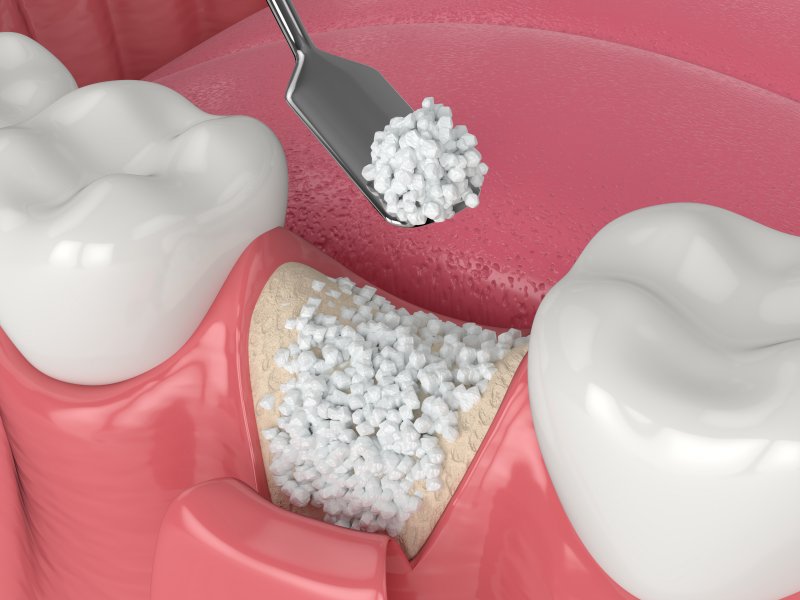
Whether you are missing one or several teeth, you may have been told by your dentist to consider dental implants. However, there are some prerequisites you’ll need to meet before they can be placed with confidence. For example, dental implants do require sufficient bone tissue for them to integrate. If the bone has deteriorated, either over time or as a result of dental disease, a dental bone graft may be necessary. Just like with any oral surgery, you’ll want to follow a few recovery tips to ensure the smoothest process possible, avoid complications, and set yourself up for success if you intend to replace teeth with dental implants.
What are Bone Grafts Designed to Do?
Dental bone grafts are necessary whenever bone tissue has become deficient. Bone deficiency can occur over time as a result of aging, but it can also happen for the following reasons:
- Gum (periodontal) disease
- Injury or physical trauma to the face
- Natural defects or developmental issues
- Empty space as a result of tooth loss or extractions
Bone grafts are most commonly performed to prepare the mouth for dental implant placement. After the bone graft has been completed, you’ll want to take specific steps to ensure you heal fully ahead of your future tooth replacement.
The Most Important Steps to Take During Recovery
Some mild discomfort is normal following a bone graft. To help you heal, you’ll be prescribe antibiotics (to prevent infection) and medications to make it easier to rest. The recovery period will typically take at least two weeks. During this initial period you’ll want to do the following:
- Get plenty of rest and avoid any strenuous activities.
- Keep your head elevated to ensure healthy blood flow to the mouth.
- Keep the area of the bone graft clean and dry.
- Brush and floss as normal while avoiding the treatment site.
- Use a cold compress to alleviate any swelling that appears.
- Avoid touching the treated area with your fingers or tongue.
- Avoid pulling on your lip to examine the surgical site (this could loosen the stitches).
- Discontinue the use of any tobacco products.
- Avoid using nicotine patches as well. Both tobacco and nicotine can delay the healing process, making it more difficult to receive dental implants later.
- Stay on top of routine checkups to ensure the graft is healing as intended.
While the recovery period can take several weeks, the bone graft itself require several months to fuse with the jaw. Once it has healed completely, you can revisit dental implant treatment and start rebuilding your smile.
About Northern Virginia Oral, Maxillofacial & Implant Surgery
Whether you need a bone graft to receive dental implants or another oral surgical treatment to restore your smile, you can trust the highly trained team of oral surgeons at Northern Virginia Oral, Maxillofacial & Implant Surgery to explain the process step-by-step and help you feel as comfortable and confident ahead of your procedure. To schedule an appointment, you can contact them through their website.
